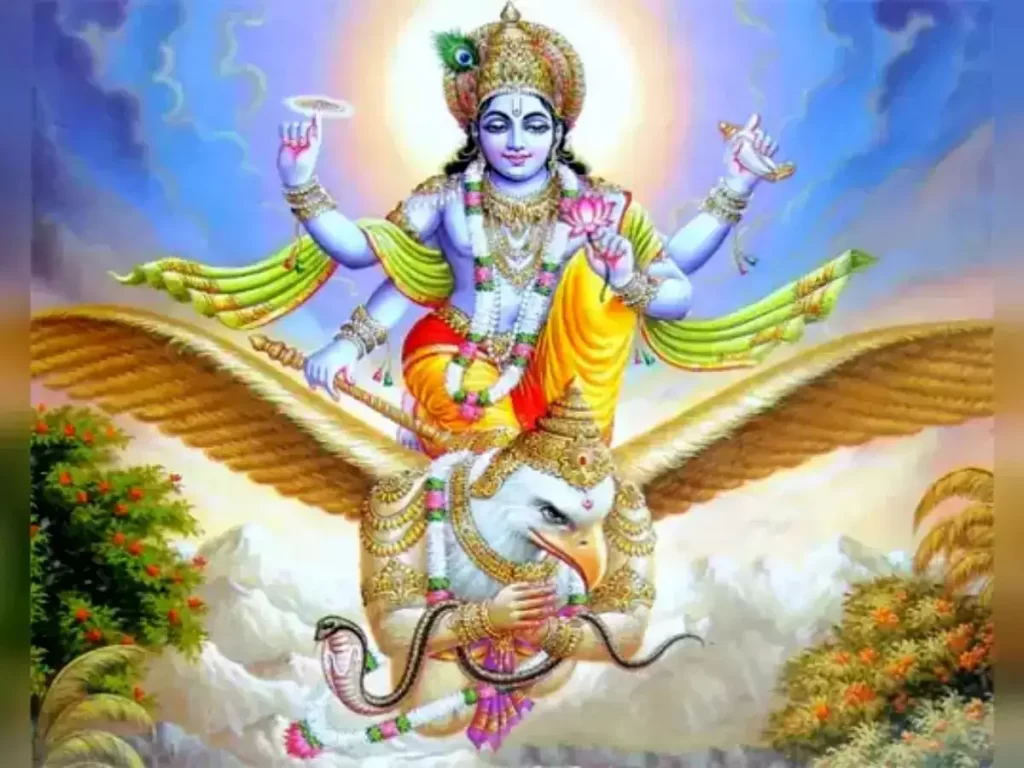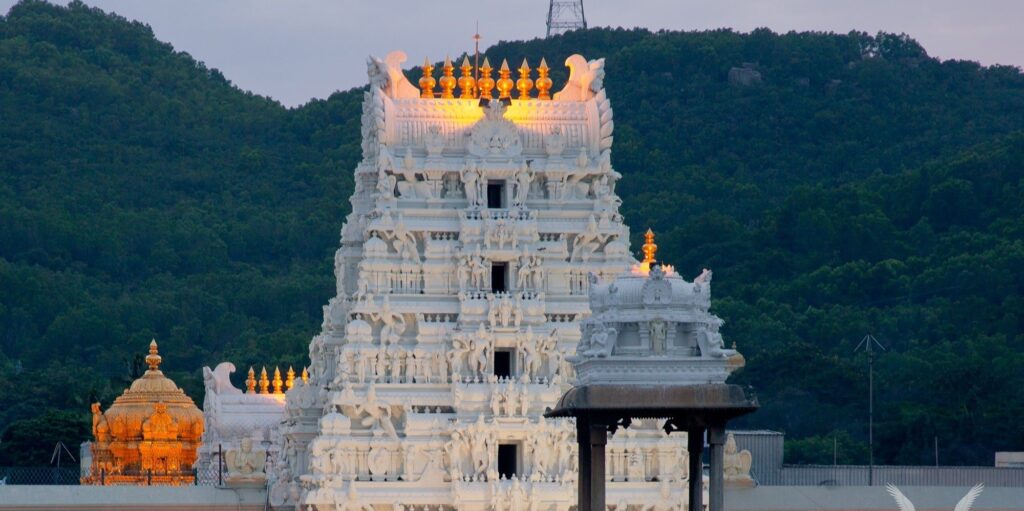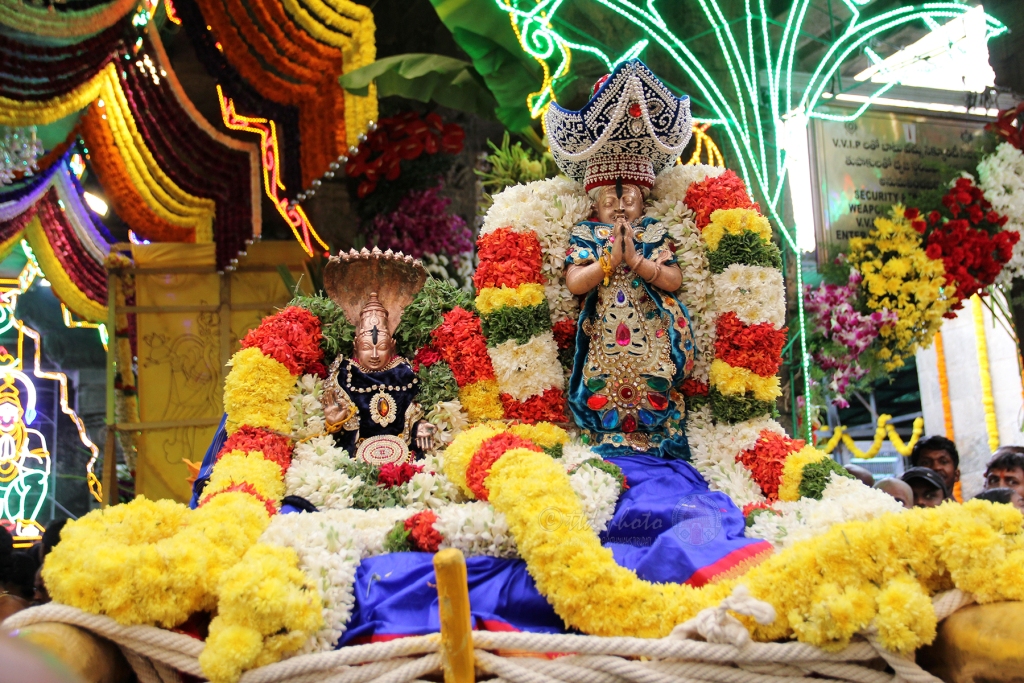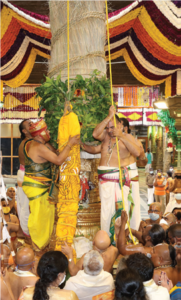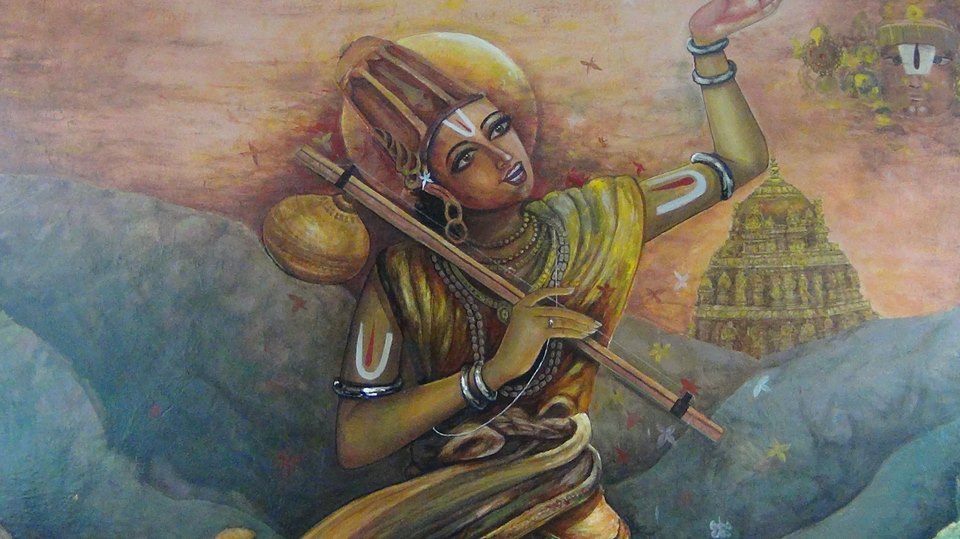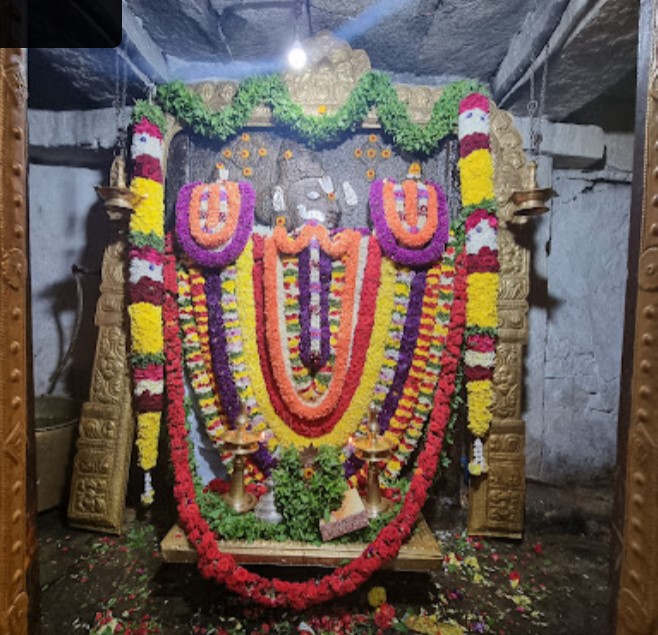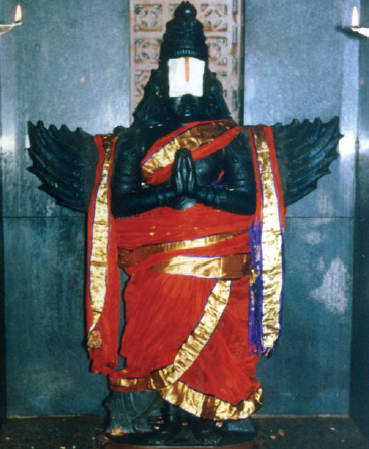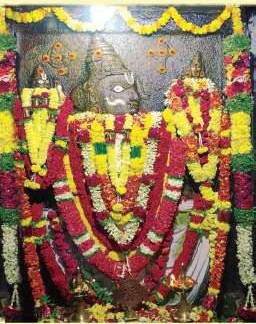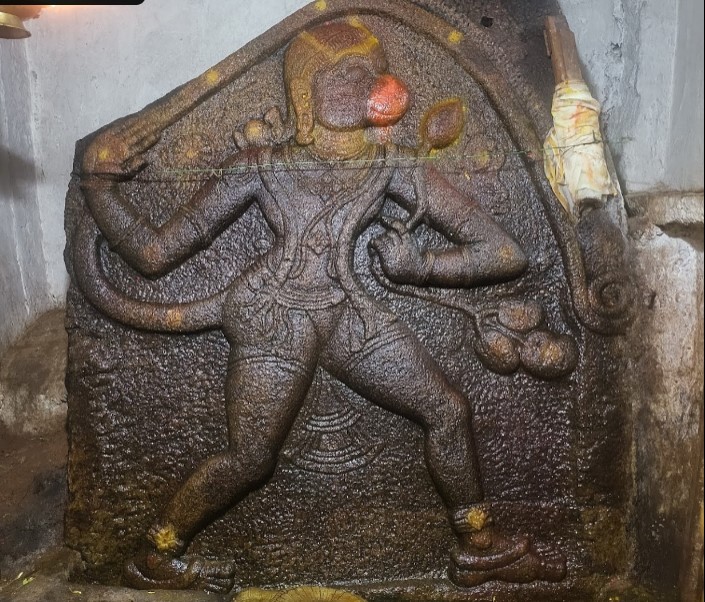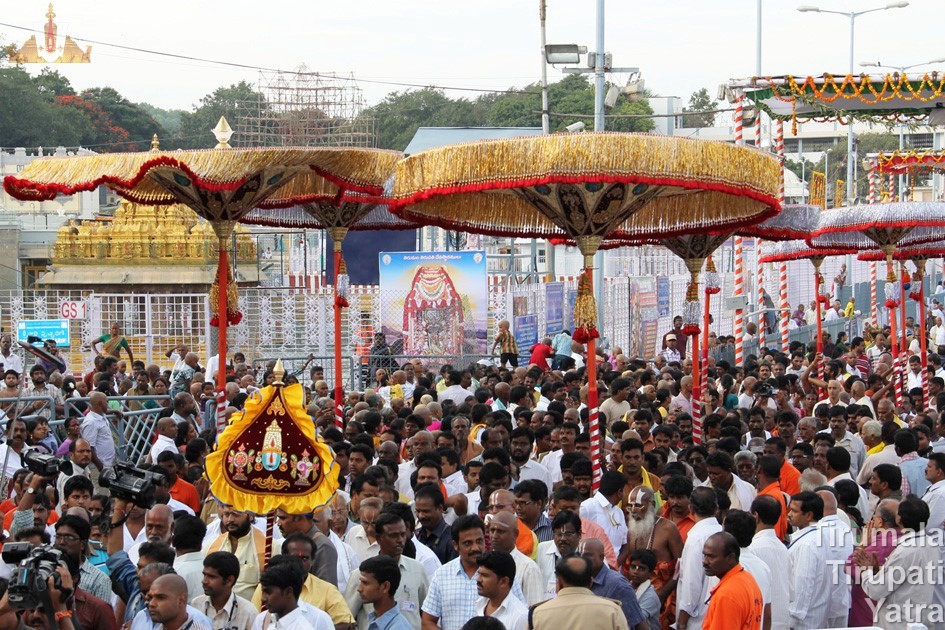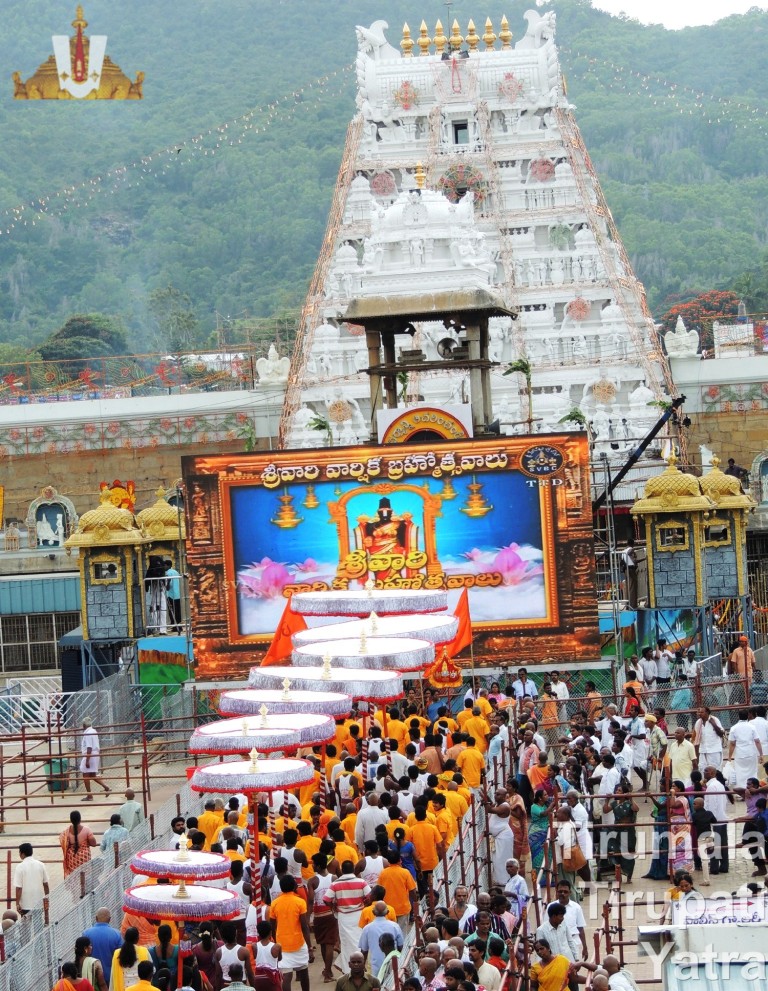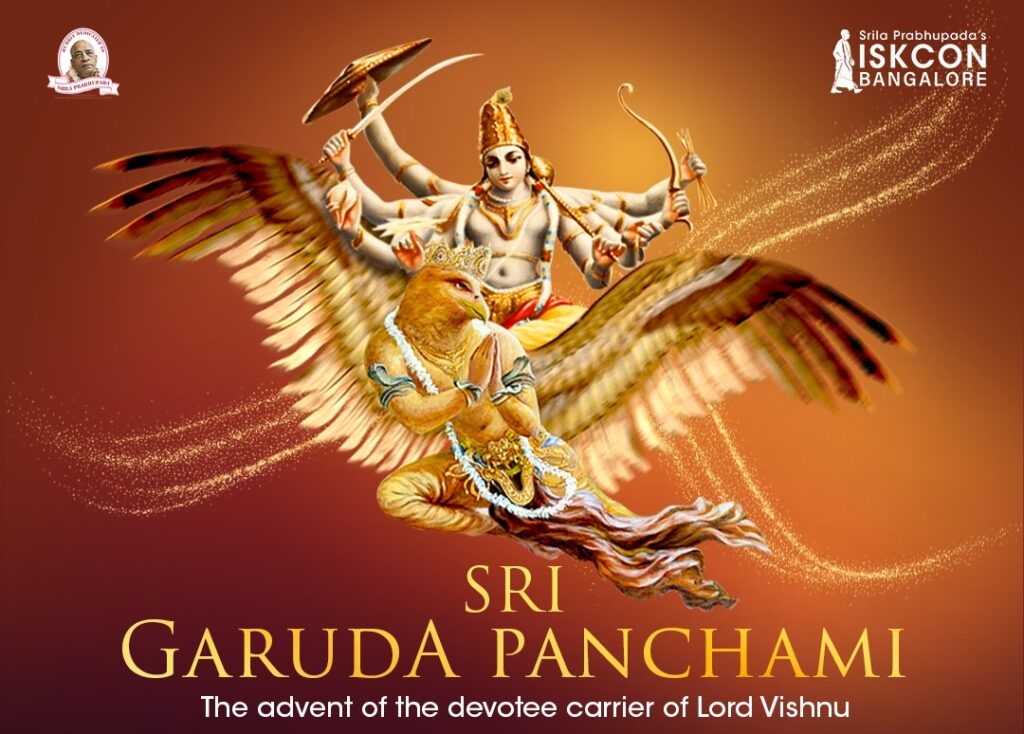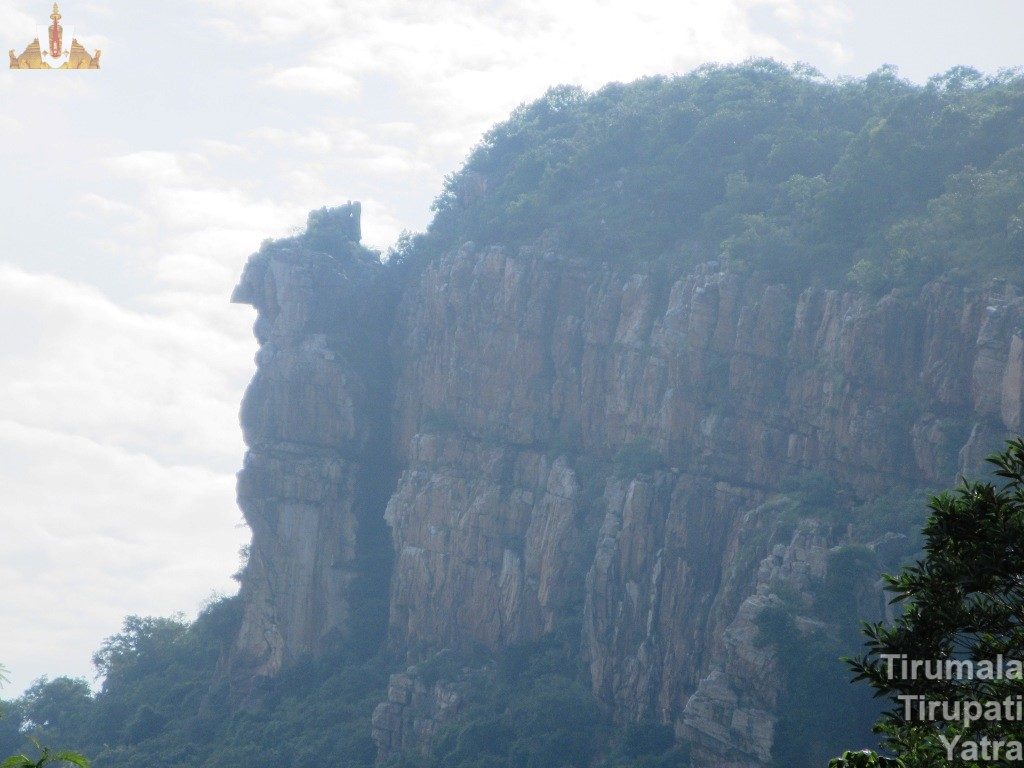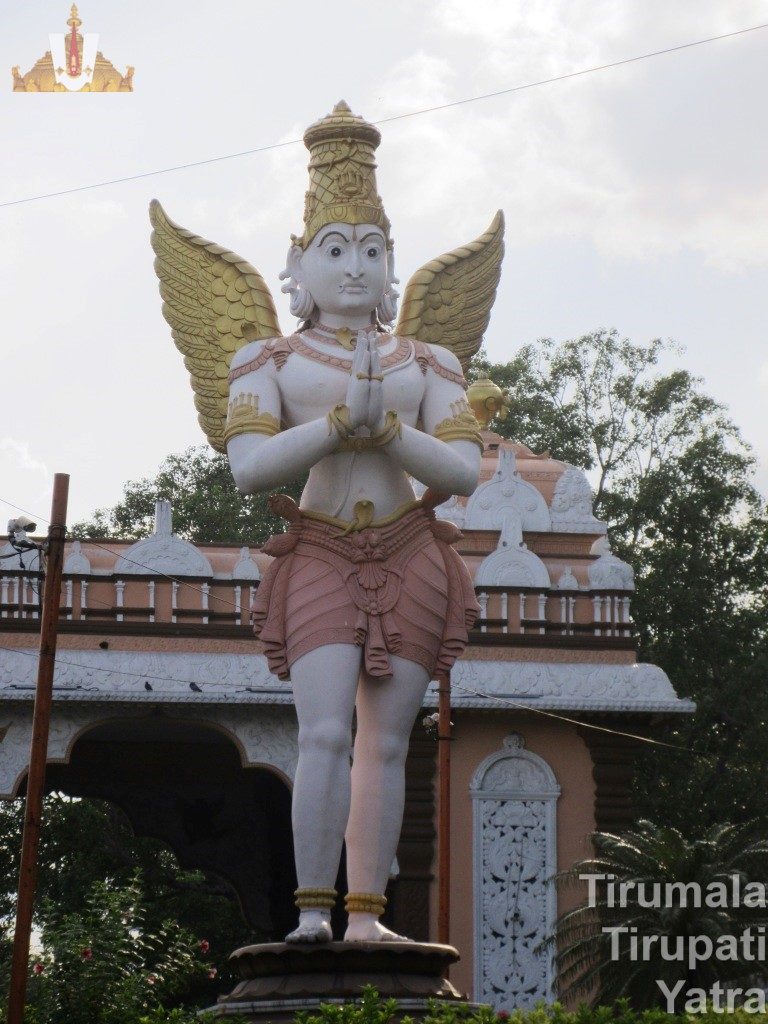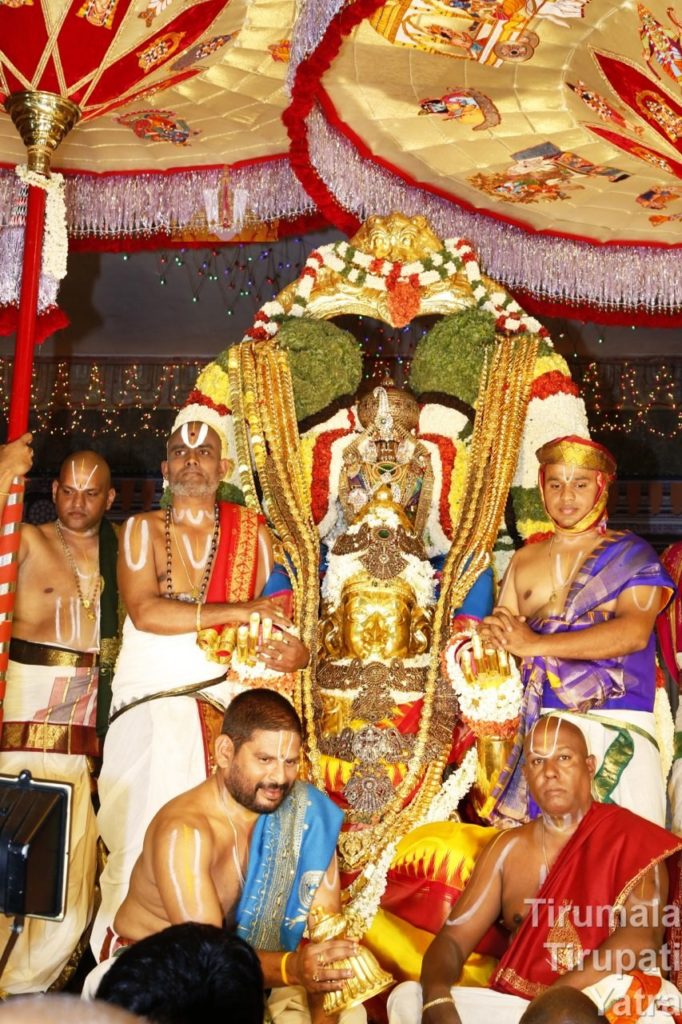Article by Smt. D.K. Ahana Lakshmi
Garuda – Pakshiraja
Garuda is described as Pakshiraja, the king of Birds. All of us recognize him as the vahana or mount of Lord Vishnu. When you enter a Vishnu temple, there is an image or icon of Garuda at the entrance. He is celebrated as ‘Periya Thiruvadi’ just as Hanuman is known as ‘Siriya Thiruvadi’.
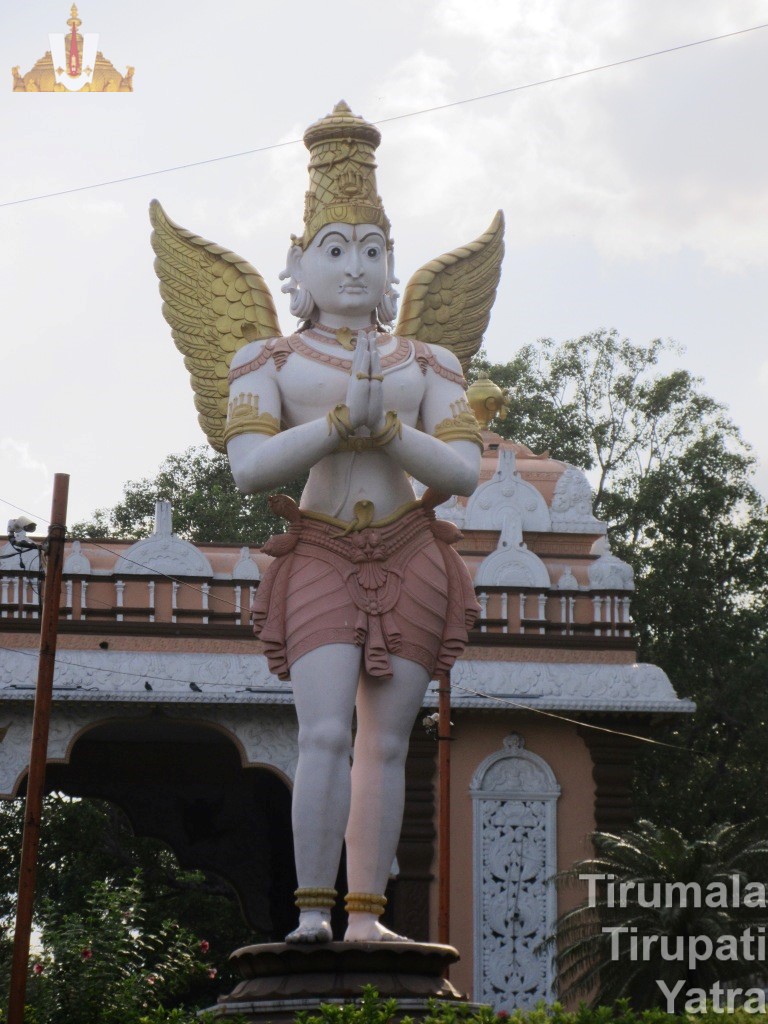
Origin of Garuda
The origin of Garuda is described in the Adiparva of the Mahabharata. Briefly, he is the son of Sage Kashyapa and Vinata. He is the younger brother of Aruna, the charioteer of Lord Surya.
But how did Garuda become Lord Vishnu’s vahana? The story is as follows: His mother Vinata lost a bet with her co-sister Kadruva (who employed a trick) resulting in Vinata becoming a slave to Kadruva and her children, the nagas. This was due to a curse uttered by Aruna who also said that she would be delivered from slavery by her son.
This could be done only by getting the amruta for the snakes that were his step-brothers (Kadruva’s children). Valiant Garuda, the shapeshifter (for he was a master of ashtasiddhis), managed to obtain the amruta that was amazingly guarded. When Garuda was in the air with the pot of nectar, he met Lord Vishnu.
Slokas 13-16 in the 33rd Adhyaya (chapter) of the Adi Parva in Mahabharata describe the encounter (summarised here): At that time, the son of Vinata encountered Lord Vishnu Narayana was pleased with Garuda’s commitment.
He called out to Garuda – ‘I would like to give you a boon’.
Garuda the sky-roamer said, ‘Lord let me serve on your flag’.
And ‘Even without a drink of the nectar, may I be immortal’. The Lord said to Garuda, ‘Let it be so’.
Now Garuda said, ‘Lord, now I proffer thee a boon.’ Lord Vishnu said, ‘I wish that you become my steed’.
And that is how the mighty Garuda became the vahana of Lord Vishnu.
Garuda-seva or the processional of the lord mounted on Garuda is a wonderful spectacle in any Vishnu temple. Crowds throng to worship the lord on Garuda because it is believed that moksha can be easily obtained when worshipping the lord on Garuda Vahana.
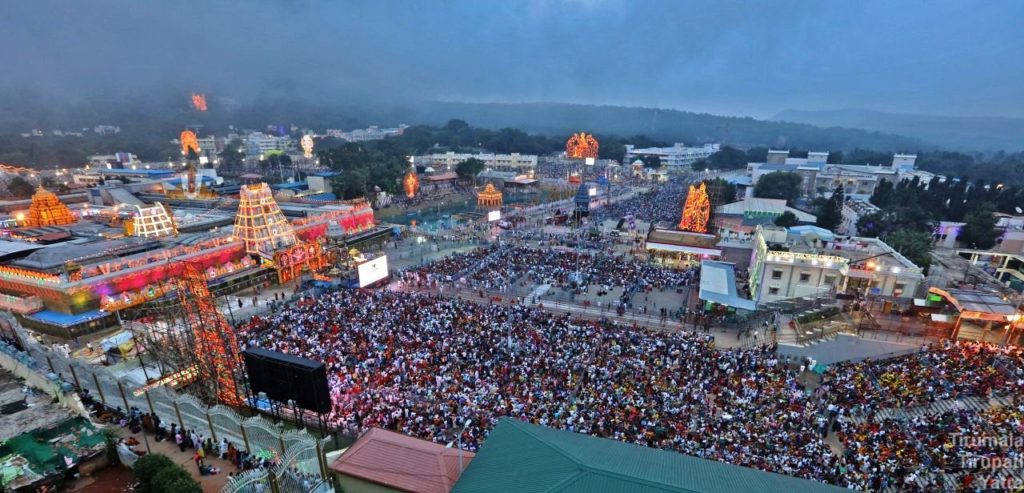
After all, did the Lord not speed to Gajendra’s rescue flying there mounted on Garuda? This scene has also been captured dramatically by the poet Pothana in his ‘Bhagavatam’. Every single illustration of Gajendra moksha shows the lord arriving to rescue the King of Elephants riding his favourite mount.
The third chapter of the ashtama skanda of Srimad Bhagavatam describes what happened. Specifically, the 31st sloka says:
Hearing the mental prayer of the distressed elephant The lord of the world wielding the Sudarsana (discus) Swiftly arrived on his vahana, Garuda, who is Possessed of a speed that depends on his will.
Garuda Vahana is so closely associated with Sriman Narayana that in Narasimha Satakam, Seshappa describing lord Vishnu says “Garudavahana divya kaustubhalankara ravi koti teja sa rangavadana”: On his Garuda vahana, adorned with the divine Kaustubha gem, bright-faced like the sun…” (Verse 83).
But Garuda is much more than all that. In Garuda Panchashat, Swami Vedanta Desika writes that Garuda is the personification of Vedas (verse 3). He says Garuda’s eyes are the Gayatri mantra, his name is the Yajur Veda and so on. At the end of the verse Swami Desika prays saying that the Garuda thus extolled by the Vedas may show us the way to freedom.
Being like Garuda, selfless, devoted and committed to achieving the given task despite hurdles on the way pleases the lord and helps attain moksha.
Garuda Vahanam in Tirumala
At Tirumala, the sight of Sri Malayappa swami mounted on the golden Garuda vahanam during Srivari Brahmotsavam sends devotees into ecstasy. Garuda is often adorned with precious jewels such as the Makara kanti, Salagrama haaram and wears a golden crown.
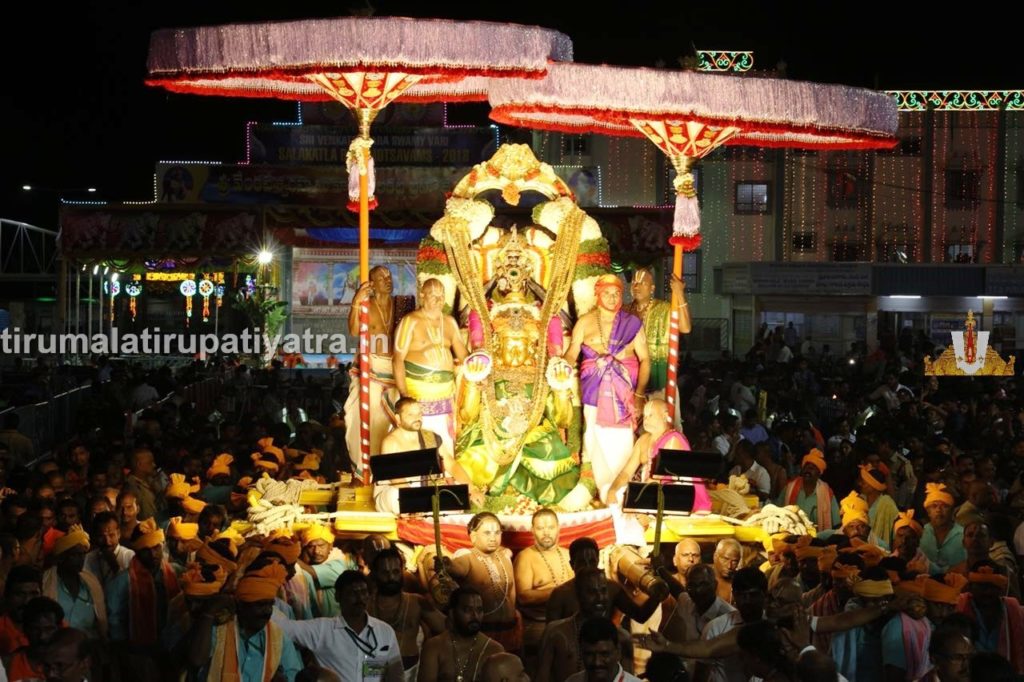
The lord’s feet are securely placed in the open palms of Garuda who is seen kneeling on one leg. Lord’s appearance on Garuda bestows transcendence and salvation to the devotees. There is also a monthly Garuda seva on the full moon night when Sri Malayappa swami varu tours the Mada streets on the Garuda Vahana.
Devotees can watch the Garudavahanaseva live on SVBC Channel and be blessed.
